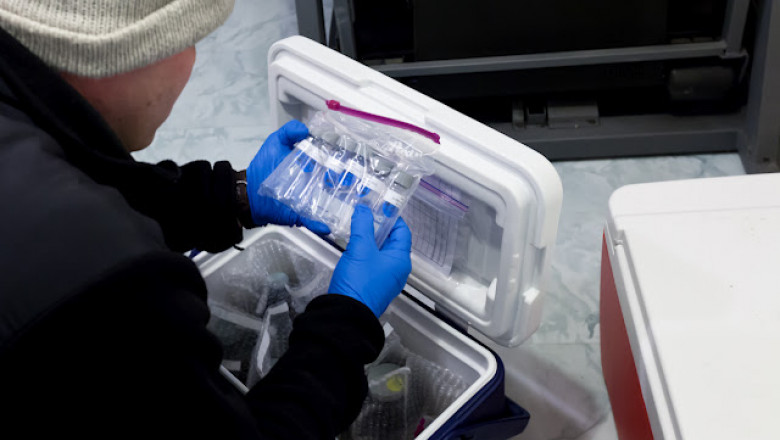 The quality of well water in Dimock, Pa. is the center of national attention for activists, journalists, regulators, lawyers, policy makers, and industry officials – all looking for the latest evidence from government studies that will support their cases for or against fracking.
The quality of well water in Dimock, Pa. is the center of national attention for activists, journalists, regulators, lawyers, policy makers, and industry officials – all looking for the latest evidence from government studies that will support their cases for or against fracking.
Dimock has become one of the most prolific places in the Appalachian basin for shale gas development, and one of the biggest examples of its impact on communities. Residents here were categorically optimistic about the prospects of leasing land to operators in 2007 and 2008. That began to change in on January 1, 2009, when a residential water well exploded soon after drilling began in the area. An resulting investigation by the DEP found methane had leaked from faulty gas wells into more than a dozen water supplies. Nearly two years later, as more problems were uncovered, John Hanger, then state’s top environmental official during the Rendell Administration, declared the aquifer that supplies certain Dimock homes to be permanently damaged. To make things right, Hanger ordered Cabot Oil & Gas to develop and pay for a pipeline from Montrose to deliver fresh water to the affected residents.
The initiative was defeated after Tom Corbett was elected governor on a pro-drilling platform. Under Corbett, the DEP declared this year that Cabot Oil & Gas had met its obligation to compensate landowners for the pollution and no longer needed to deliver water to residents. The federal EPA responded with an own investigation after reviewing data from previous tests by Cabot and the DEP that, according to an EPA memo, showed "a number of home wells in the Dimock area contain hazardous substances, some of which are not naturally found in the environment." The memo identified drilling operations as a suspect.
There have been other reports of water pollution in Dimock. In 2010, testing by Farnham and Associates, an engineering firm that specializes in commercial waste-water issues, found traces of hydrocarbon solvents—including ethylbenzene, toluene, and xylene -- showing up periodically after heavy rains in the wells of people who also had methane problems
A preliminary report released by the EPA this week spurred more controversy. Results of the first 11 of 61 wells sampled showed traces of some compounds associated with drilling operations, including sodium, methane, chromium, but none of them at levels that presented health risks. Arsenic was detected in two wells at concentrations high enough to warrant more investigation “to better characterize the water quality of these wells,” according to Roy Seneca, EPA Region 3 press officer. Since beginning the investigation in January, the EPA has collected samples at 61 homes, with results from the other 40 homes pending.
The results, far from complete, provided enough for the industry to hold them up as evidence that the water is fine, and to justify reproach aimed at the EPA for butting in. “We hope that lessons learned from EPA’s experience in Dimock will result in the Agency improving cooperation with all stake holders and to establish a firmer basis for Agency decision making in the future,” read a Cabot statement.
Activists, on the other hand, are seeing something altogether different. “There are results from 40 other wells that are not yet in,” said Julie Sautner, whose well was polluted in 2009, according to DEP records. The Sautner well was eventually taken off line after a filtration system set up by Cabot began to malfunction. Sautner and her husband, Craig, were originally drilling supporters and are now anti-fracking activists. They are also part of a lawsuit seeking damages from pollution that members of 15 households filed against Cabot in late 2009. “I’m not putting myself through this because I have nothing to do,” said Sautner. “Something is wrong with the Dimock water.”
Meanwhile, The DEP is continuing an investigation into new problems and complaints in Franklin Forks, 10 miles north of Dimock, where the agency has found elevated levels of methane in three wells, and pressurized gas hissing from one in an area being drilled by WPX Energy. More results are expected in four to six weeks, said Colleen Connolly, a spokeswoman for the DEP. Officials suspect that the pressurized methane could have passed from gas baring zones into the aquifer along imperfections in cement casings designed to seal off well bores. The EPA is not involved in the Franklin Forks investigation, according to officials form both the DEP and the EPA.
Water tables and conditions that affect them are dynamic systems. Problems may be there one day and gone the next, only to return. That’s why the EPA is calling for follow up tests in some wells for a more complete picture… along with the pending results of 40 others.
Tom Wilber is the author of Under the Surface: Fracking, Fortunes, and the Fate of the Marcellus Shale
Photo by James Pitarresi

